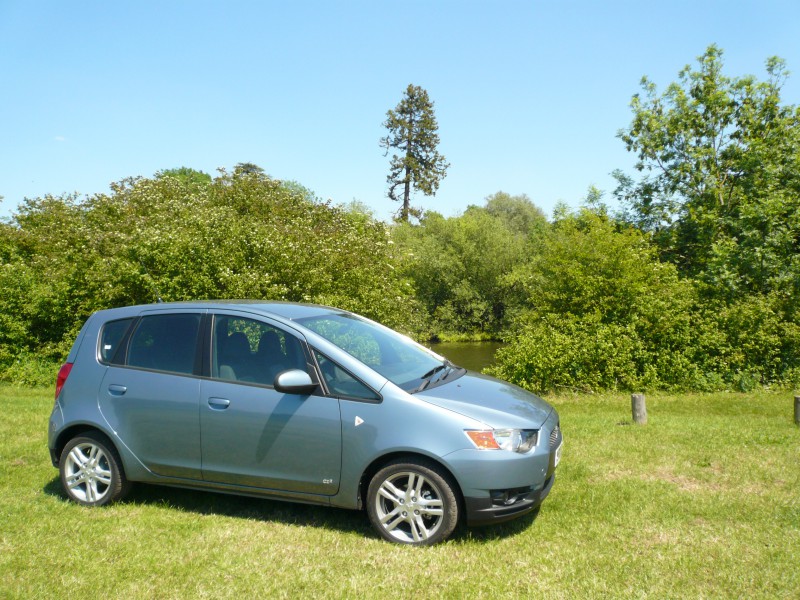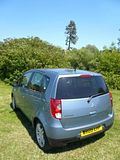
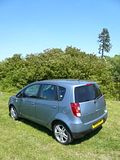

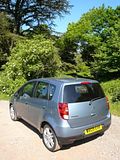

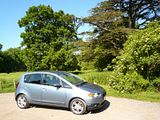
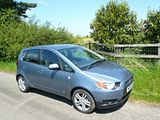
One of the real surprises at the “Mondial de l’Automobile” in October 2008 was to be found on the Mitsubishi stand. Although billed as “all new”, it would be more accurate to say that what was shown was an extensive makeover for the long-running Colt super-mini model. Despite what you might think from the name, this car is made in the Netherlands, and it shared many components with the short-lived Smart Forfour. Both cars appeared in 2004, so 4 years without major change to the MPV-esque Colt should perhaps have prepared everyone for some changes. Visually, the most obvious difference was the grafting on of a new front end designed to look not unlike that on the latest Lancer and Evo cars. At the back, the long taillight strip has been shortened somewhat. Inside, although the overall cabin architecture remains the same, the luminous blue plastic strip that went down the middle of the centre console has gone, and the trim materials have been upgraded. Mechanical changes largely centred around making the Colt steer, ride and handle better, though the range does now include a Cleartec version with lower emissions as well. It was a 1.3 litre engined 5 door model in the CZ2 trim that I found as a surprise parked up at Hertz’ Bristol location, and which the staff quickly made ready for me so I could try something that bit different from their more usual mix of Ford, Fiat and VW cars.
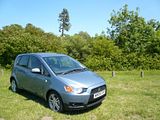

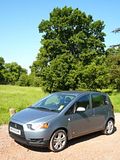
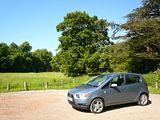
With 94 bhp being generated by the Colt’s 1.3 litre engine, you could reasonably expect this car to feel significantly brisker than the standard rental supermini, which at least until recently tended to be served up in the 1.2 litre 60bhp version. Whilst the engine did spin quite sweetly and seemed pleasantly refined, it also felt a bit tight, as the test car had only done 700 miles , so in an act of some sympathy, I did not push it hard as might usually be tempting. Perhaps in deference to ongoing quests for better economy, there is a small arrow that appears in the instrument display, suggesting when you should change up a gear. It seemed to show at about 2300 rpm, which might do wonders for fuel consumption, but does not make for the most rapid of acceleration, as like many a modern petrol engine, to get the best out of it, you need to push it hard enough to get to the point where more torque is being generated. May be I ignored its suggestions too much, but the overall economy was a little disappointing, at just 33.4 mpg. Most of the miles were undertaken on the motorway, and here at a cruising speed of 80 mph, the Colt proved a little noisier than I would like. I have to say that it is no worse than many of its competitors, which also still vividly illustrate the difference between this class of car and the next size up. The gearchange is very precise, with a short travel between the gears. I was less impressed by the fact that the metallised inset to the gear lever was not quite flush with the leather outer covering, being a little inset, which just slightly slightly awkward to hold. This must be one of few cars still on sale with a rubber moulded gear lever gaiter. There is a traditional pull-up lever handbrake in between the seats, which is surprisingly large in diameter and with a very large release button in its end. The steering is light, and had reasonable feel to it, though it clearly has never had the inspiration of the Ford touch to it, and nor has the handling. “Predictable” is probably the best word to describe it. The motoring press have criticised the Colt for a rather indifferent ride quality, but I did not find the test car too bad, so either I have got used to a hard ride, or the suspension changes to the facelifted model have improved things. One consequence of the shape of the Colt is that there are sizeable front quarter lights well ahead of the driver, and these certainly aid front 3/4 visibility, but the pillars between them and the door are noticeable. Otherwise, this is an easy car to see out of, and although the front slopes away so steeply you can see none of it from the driver’s seat, positioning it, and parking up proved every easy.
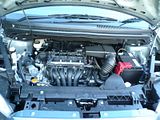
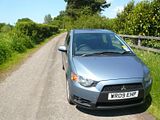
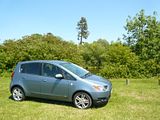
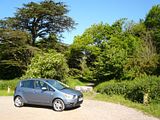
The interior is simple and unfussy looking. A restrained pattern on the seats is complemented by an unusually, and not unpleasantly textured dash, a simple instrument binnacle and an unfussy control layout. Look a little closer and it is apparent that the Colt is decently well equipped. As well as the now almost universal air conditioning, there are column mounted controls for the acceptable quality stereo functions, complete with MP3 attachment, and you get front fog lights with the standard trim, both steering wheel and gearknob are leather covered, there are electric windows front and back and remote central locking (VW, note, please for the Polo!). Cruise control is the feature you really would not expect on a car of this price, but you get it, and the standard alloy wheels look far better than some horrid plastic wheel trims would. Only the quality of the air conditioning control switches disappoints, as they do feel rather cheap. The dash is actually made of a very hard plastic, but some texturing work makes it look acceptable enough for a car of this price. The instrument binnacle contains just two dials, for the speedometer and rev counter. Sandwiched between them is a digital display area where a horizontal bar chart shows the level in the fuel tank, and the total mileage, along with space for some other warning lights. There is no water temperature gauge, just a warning light, which lit up blue when the car was first fired up from cold, but which quickly went out once the Colt had warmed up. One feature that irked me a little was the seat belt buzzer that sounded as soon as you turned the key, rather than when you actually fired the engine.
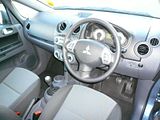
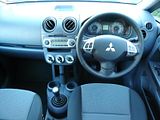

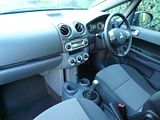
The rather boxy shape of the Colt is a consequence of a deliberate effort to make a roomy car. And it largely works. This car feels far roomier inside than any of its mainstream competitors, most especially the new Fiesta which has deliberately traded style in exchange for space, with particularly generous levels of headroom. The amount of rear legroom available once the seats were set to match my proportions was astonishing for such a small car. Perhaps not surprisingly, the regular boot is not that big, being just long enough to take my suitcase lying down. There is a removable board which is used to ensure the boot floor is flush with the bumper level, and taking this out (it just lifts off) provides a useful increase in depth. The boot can be readily extended by pulling up the asymmetrically split rear seat cushions and dropping the back rest onto the space created. Some ingenious moulding in the underside of the cushion means that you can leave the headrests in place and they dovetail perfectly into the space. Inside the cabin there is oddment space a plenty. As well as the door pockets, which have mouldings to support a bottle at their front end, there are cubby holes under the stereo, on both sides of the lower centre console, between the seats, on the top of the dashboard, on top of the glove box and there is a reasonable sized glove box as well. There are two deep indentations for cup holders in front of the gear lever. The interior really would accommodate all the sort of family clutter that could so easily accumulate in a car like this, though rear seat passengers are less well provided for, with no door pockets and no pockets in the back of the front seats.
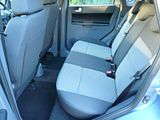
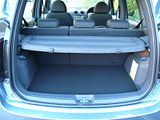
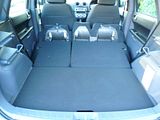
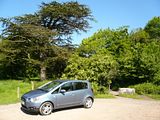
So, should you buy one? I can see why people just might. The test car retails at £9600. To get a 5 door version of a Fiesta, Corsa or even Grande Punto with an equivalent amount of power, you are looking at a lot more money – equivalent power and trim levels take the list price of these competitors to over £13,000, which is a big premium. Even the highly rated Honda Jazz costs a couple of thousand pounds more. The Colt is likely to prove reliable and painless to own. It won’t be everyone’s choice, and there was no real sense of “fun” associated with driving it, but those who need a roomy supermini should perhaps take a look.

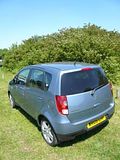
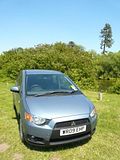
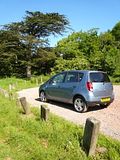
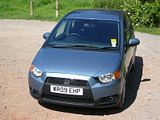
2009-09-17 06:33:11




























